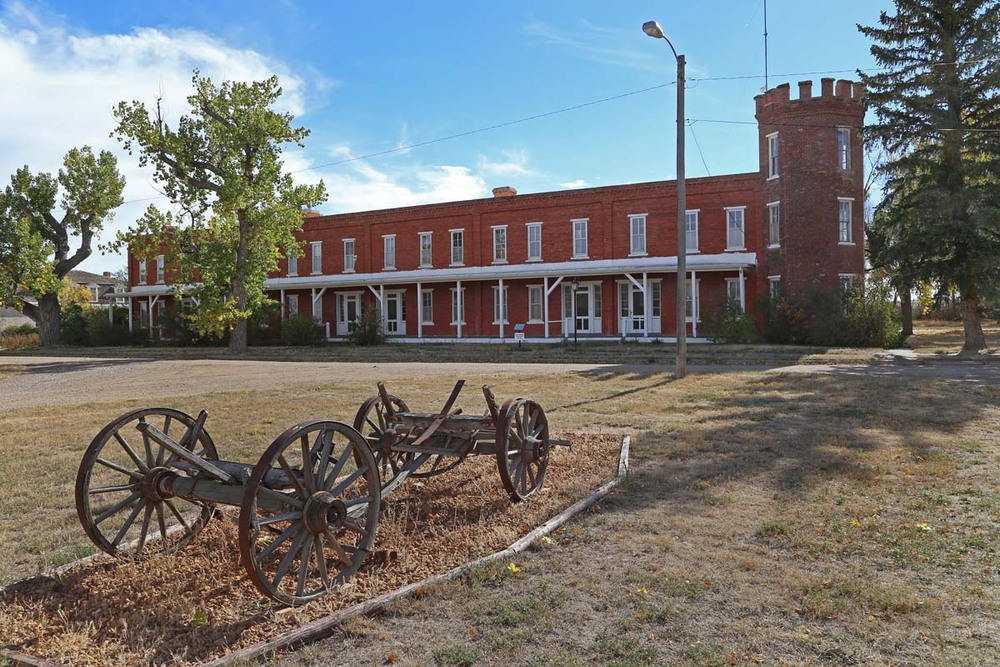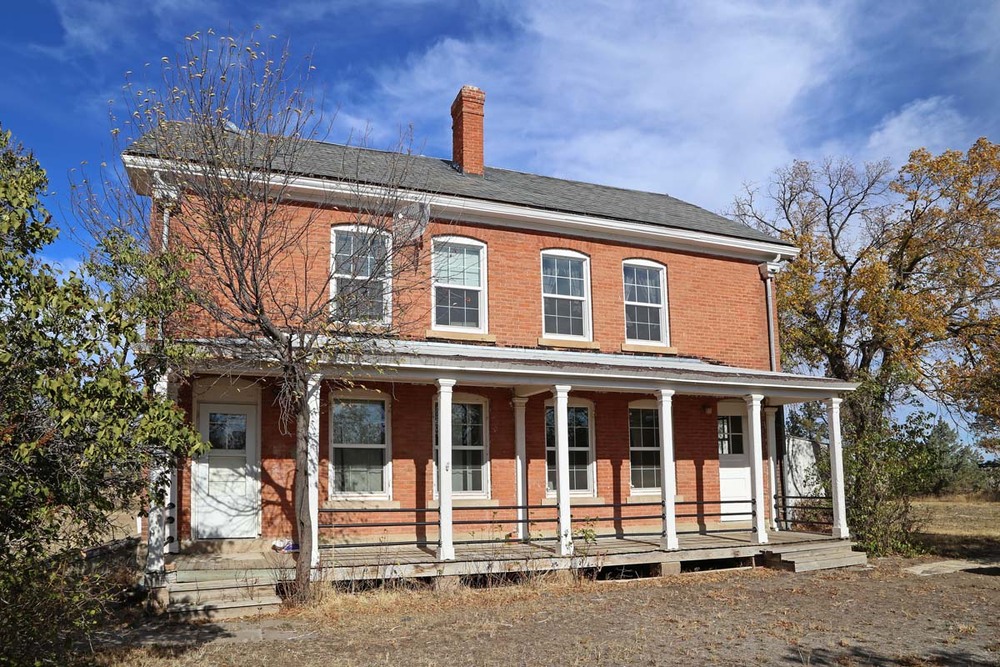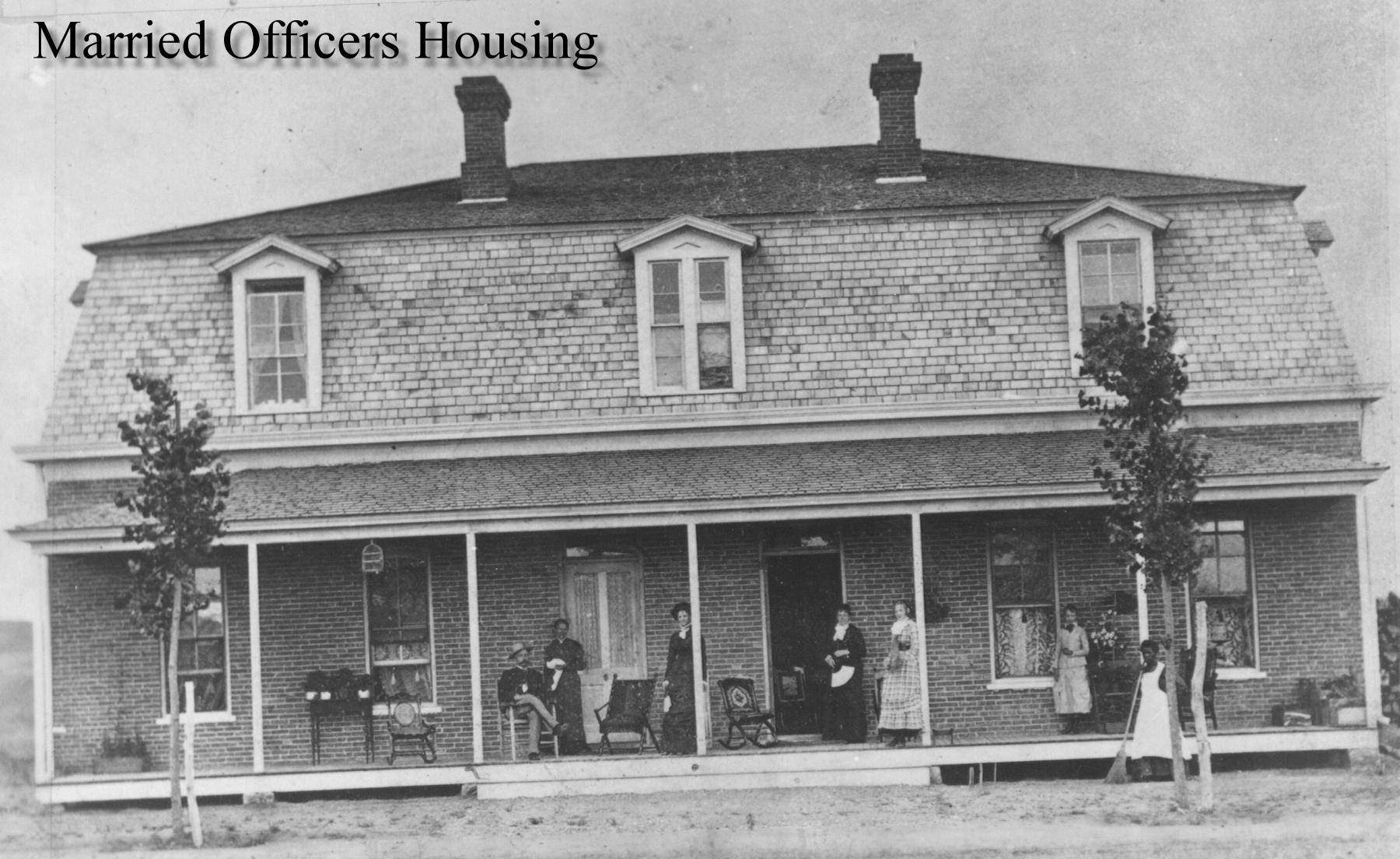
Echoes on the Prairie: The Enduring Ghost of Fort Assinniboine
On the vast, windswept plains of northern Montana, where the sky stretches endlessly and the distant Rocky Mountains shimmer like a mirage, stand the silent, brick-and-stone sentinels of a forgotten era. These are the spectral remains of Fort Assinniboine, once the largest and most expensive military post in the United States, a colossal monument to federal power and a stark reminder of the nation’s tumultuous westward expansion. Today, its crumbling walls and overgrown parade grounds whisper tales of cavalry charges, desperate frontier life, and a grand vision that ultimately succumbed to the relentless march of time.
To understand Fort Assinniboine is to delve into the heart of post-Civil War America, a period defined by rapid industrialization, burgeoning national identity, and the violent, often tragic, subjugation of Native American tribes. By the late 1870s, the "Indian Wars" were reaching their brutal climax. The defeat of Custer at Little Bighorn in 1876 had sent shockwaves across the nation, galvanizing Washington’s resolve to assert control over the remaining unpacified territories. Coupled with this internal conflict was a growing concern over the porous Canadian border, a sanctuary for defiant tribes like Sitting Bull’s Lakota Sioux and a potential staging ground for British interference.
It was against this backdrop of geopolitical tension and internal strife that Fort Assinniboine was conceived. Its strategic location, nestled along the Milk River near present-day Havre, Montana, was no accident. It lay squarely between the traditional hunting grounds of the Blackfeet, Gros Ventre, and Assiniboine tribes, and offered a direct line of sight to the Canadian frontier, where Sitting Bull and his followers remained a persistent, unsettling presence after their flight from the U.S. Army. The fort’s mission was clear: to maintain peace among the warring tribes, to deter incursions from Canada, and to safeguard the growing tide of settlers, miners, and ranchers venturing into the Montana Territory.

Construction began in 1879, and what followed was an undertaking of staggering ambition and scale. This was no temporary log stockade; Fort Assinniboine was designed to be permanent, a veritable city on the prairie. "They built it to last," noted local historian and preservationist, Ken Kenck. "It was the most advanced fort of its time, a statement of power and intent."
The fort’s cost alone was legendary: an astounding $1 million in late 19th-century dollars, a sum that would be equivalent to tens of millions today. Thousands of laborers, both civilian and military, toiled under harsh conditions to bring the vision to life. Over 10 million locally-made bricks, fired in kilns on-site from the rich Milk River clay, were laid by skilled masons. Local quarries supplied limestone for foundations and decorative elements, giving the fort a distinctive, robust character.
When completed, Fort Assinniboine sprawled across more than a square mile, encompassing over 100 buildings. Its facilities were state-of-the-art for the era, designed for self-sufficiency and long-term occupation. It boasted a sophisticated water system, piped directly from the Milk River, a telegraph office connecting it to the outside world, a large hospital, bakeries, blacksmith shops, stables for hundreds of horses, and barracks capable of housing over 1,000 troops. The grand parade ground, larger than many town squares, was flanked by officers’ quarters, non-commissioned officers’ housing, and administrative buildings, all meticulously arranged in a layout that reflected military precision and hierarchy.
Life at Fort Assinniboine, however, was far from the orderly ideal suggested by its architecture. For the soldiers stationed there, it was a test of endurance against the relentless Montana environment. Bitterly cold winters, often dropping to 40 degrees below zero, were followed by scorching summers, thick with dust and mosquitos. Isolation was a constant companion, broken only by the occasional supply train or the rare visit from a senior officer. Boredom was a pervasive enemy, fought with drill, card games, and copious amounts of alcohol.
Yet, despite the hardships, the fort served its purpose. Its presence alone was often enough to deter conflict. Troops from Assinniboine, primarily infantry and cavalry units, routinely patrolled the vast territories, scouted for signs of unrest, and escorted survey parties. While it never saw a major pitched battle on its grounds, its strategic importance was undeniable. It played a critical role in monitoring the movements of Sitting Bull’s people after their return from Canada in 1881, ensuring their eventual surrender and relocation. It also served as a staging post during the final phases of the Nez Perce War, though the main engagements occurred elsewhere, its troops were ready to intercept any northern movements.
The fort was a microcosm of frontier society, a melting pot of cultures. Soldiers hailed from diverse backgrounds, including recent immigrants seeking a new life. Civilian employees, from cooks to laundresses, contributed to the daily rhythm. Native Americans, too, were a constant presence, sometimes as scouts or laborers, at other times as delegations seeking supplies or negotiating peace. The complex interactions between these groups, often fraught with misunderstanding and tension, paint a vivid picture of the challenging social landscape of the American West.
But the era of the grand frontier fort was drawing to a close. By the turn of the 20th century, the geopolitical landscape had dramatically shifted. The "Indian Wars" were largely over, the last major conflict at Wounded Knee occurring in 1890. The Canadian border had stabilized, and the threat of British intervention had long dissipated. Railroads had crisscrossed the plains, making fixed, isolated posts less necessary for troop deployment and supply. The advent of new military technologies and strategies also rendered these massive, expensive installations obsolete.
The cost of maintaining Fort Assinniboine, coupled with its diminishing strategic value, became untenable. In 1911, just 32 years after its construction began, the U.S. Army officially abandoned the post. The bugle calls ceased, the parade ground fell silent, and the soldiers marched away, leaving behind a magnificent, yet suddenly purposeless, monument.
What followed was a period of repurposing and slow, inevitable decay. In 1913, the Montana State College of Agriculture took over the site, intending to establish an agricultural experiment station and school. For a brief few years, the old barracks housed students and scientists, and the parade ground became a testing ground for new farming techniques. However, this venture proved short-lived, and by 1915, the college relocated, leaving the fort to the elements once more.
Over the subsequent decades, Fort Assinniboine’s buildings were gradually stripped for their valuable materials. Bricks were carted away to construct buildings in nearby Havre, and timber was repurposed for barns and homes. Time, weather, and neglect took their toll. Roofs collapsed, walls crumbled, and the prairie began to reclaim its own. The once-proud structures became ruins, silent witnesses to a bygone era.
Today, Fort Assinniboine is a hauntingly beautiful shell of its former self. Only a handful of the original 100+ buildings remain standing, mostly in various states of disrepair. The majestic brick powder magazine, built to withstand an explosion, is remarkably intact. Portions of the post hospital, officers’ quarters, and various outbuildings still stand, their skeletal frames offering a glimpse into the fort’s former grandeur. The old parade ground, now overgrown with native grasses, still retains its vast, open expanse, inviting the imagination to fill it with the phantom echoes of marching boots and bugle calls.
The site was designated a National Historic Landmark in 1993, a testament to its profound significance in American history. Local groups and dedicated individuals have worked tirelessly to preserve what remains, clearing debris, stabilizing crumbling walls, and advocating for greater recognition and resources. "It’s more than just old buildings," says a volunteer from the Fort Assinniboine Preservation Society. "It’s a tangible link to our past, a place where you can feel the history, touch the struggles and triumphs of those who lived here."
Visiting Fort Assinniboine today is a deeply evocative experience. The vastness of the Montana sky, the endless horizon, and the stark beauty of the ruins combine to create an atmosphere of profound reflection. One can almost hear the ghostly whispers of soldiers on patrol, the distant thud of cavalry hooves, and the daily grind of frontier life. It stands as a powerful reminder of the nation’s complex history – the ambition, the conflict, the sacrifice, and ultimately, the impermanence of even the grandest human endeavors.
Fort Assinniboine is more than just a collection of ruins; it is a sentinel of memory, a place where the past asserts its presence with quiet dignity. It invites us to contemplate the forces that shaped the American West, the lives lived and lost, and the enduring power of nature to reclaim what was once forcefully imposed upon it. In its silent decay, Fort Assinniboine offers a compelling narrative of ambition, decline, and the enduring echoes of history on the vast, untamed prairie.



